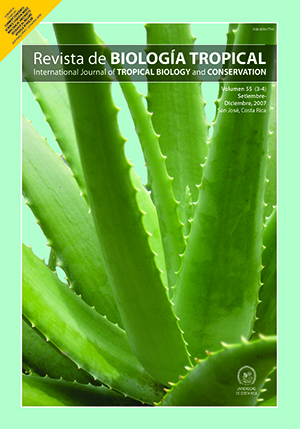Abstract
Shade trees are frequently present in coffee (Coffea arabica L.) agroforestry systems of Mesoamerica. These systems can harbor a rich entomofauna, including ants, which could be predators of key pests in these systems. However, the role of shade on the distribution and abundance of these ants is unknown, yet such knowledge could suggest guidelines for manipulating certain environmental conditions of their habitat, thereby achieving their conservation and increase. Therefore, we studied the effect of shade on the spatial and temporal distribution of three ant species (Solenopsis geminata, Pheidole radoszkowskii and Crematogaster curvispinosa) that may prey on the coffee berry borer, Hypothenemus hampei (Coleoptera: Scolytidae), and the mahogany shootborer, Hypsipyla grandella (Lepidoptera: Pyralidae). To do this, abundance was evaluated across a sun-shade gradient in a coffee plantation with four alternate plots (from pure sun to total shade) in Turrialba, Costa Rica. In the community that was studied 28 species of ants were collected, of which S. geminata was the dominant species (79 % of the total individuals), followed by P. radoszkowskii (16 %). S. geminata and C. curvispinosa preferred sunny areas, while P. radoszkowskii showed no defined preference. Likewise, with respect to location, S. geminata predominated in the soil, while P. radoszkowskii and C. curvispinosa predominated in coffee bushes.

This work is licensed under a Creative Commons Attribution 4.0 International License.
Copyright (c) 2007 Revista de Biología Tropical

